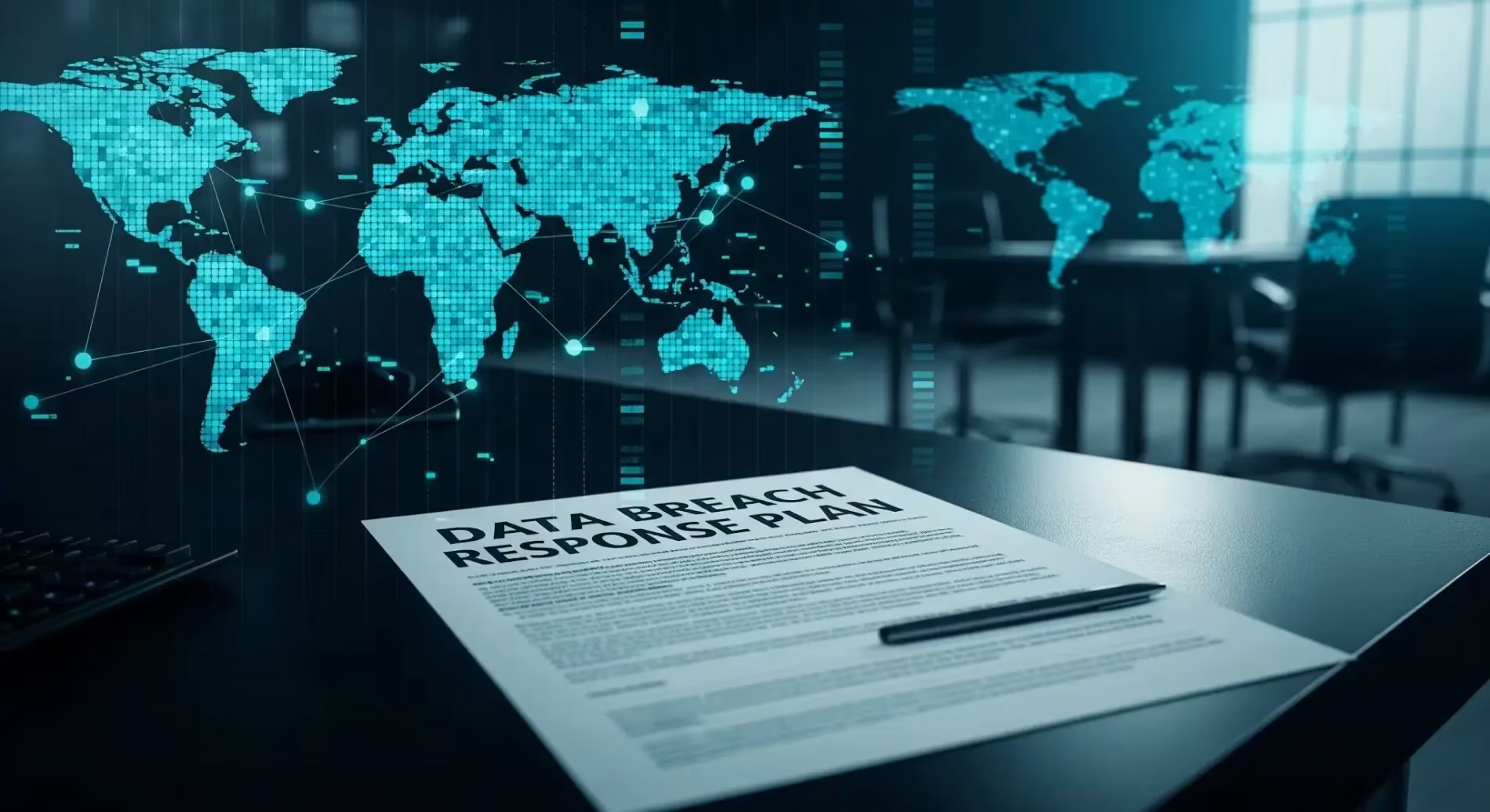All blog posts
Build Resilience: Why Investing in Emergency Preparedness Matters
Resilience is one of the key challenges for organizations today in our times of global uncertainty and risk. It’s also a key indicator of any organization’s ability to survive and drive sustainable growth.
‘In a time of almost unprecedented geopolitical and geo-economic uncertainty, resilience—the ability to deal with adversity, weather shocks and adapt as crises arise—has never been so important,’ observes the World Economic Forum’s Resilience Consortium.
But resilience is more than just an ability to weather a storm. It’s a growth-oriented mindset and capabilities in the midst of disruption. This is something to be cultivated. At RAYVN we see that emergency preparedness plays a critical role in strengthening resilience for our customers: both as an ability to prepare for and respond to critical events as well as to survive and thrive in the face of risks, threats and uncertainty.
Read on to learn more why the investment in emergency preparedness strengthens resilience as a capacity for growth.
Why Resilience Matters: The Cost of Inaction versus the Benefits of Proactivity
In 2024, McKinsey & Company in partnership with the Resilience Consortium identified the value of resilience in terms of both the cost of inaction as well as advantages of proactive resilience-strengthening activities:
Cost of inaction:
Up to 8% of GDP can be lost without resilienceEmbrace resilience:
add up to 15% of GDP This is an enormous swing in value with the cost of inaction resulting in serious loss and the investment in resilience leading to improved profitability and significant growth.
This is an enormous swing in value with the cost of inaction resulting in serious loss and the investment in resilience leading to improved profitability and significant growth.
For organizations, the investment in resilience yields a demonstrable competitive advantage—as the 2007-09 economic crisis and the COVID pandemic proved—in terms of the ability to survive disruption, recover, asses, adapt and thrive. Planning and preparation translate into a self-made advantage: to move fast, early and decisively in the face of disruption.
Consequently, this research into resilience leads to several calls-to-action:
- Leaders need to drive resilience from the top down
- Resilience needs to become an agenda
- What gets measured gets done: what is the framework for measuring resilience?
- Measurement need to be embedded in the decision-making and scenario planning for any organization
- Resilience emerges through collaboration: it cannot be done alone.
- Organizations need to identify how to build skills, capabilities and practices
- Resilience is a process for working continuously to face challenges, adapt and transform for sustainable growth because business, societal and economic resilience are interlinked.
Clearly, resilience has emerged as a strategic priority to manage risk and threats as well as drive transformation and growth in the face of disruption, crisis and transition.
But what exactly is resilience? And how do we build it?
The Resilience Framework
What resilience means is much discussed and debated. For RAYVN, one definition that stands out refers to 'a healthy, adaptive, or integrated positive functioning over the passage of time in the aftermath of adversity.’ Fundamentally, resilience is growth-oriented and involves the ability to assess risks, mitigate disruption and learn from experience how to adapt and transform in the face of anticipated and unexpected challenges.
The World Economic Forum proposes that there are four key principles to a resilience framework from an organizational perspective: resolve, communication, agility and empowerment.
At RAYVN, we see that the decision to invest in emergency preparedness and critical event management can help build resilience as organizations commit to risk assessment, create action plans and build out their emergency response networks to respond more effectively. Reporting, assessment and adaptation processes to improve for the future can help to mitigate risk for the future.
Specifically, we see that RAYVN helps customers in the following way:
- Resolve the commitment to digitalize emergency preparedness improves operational and organizational resilience through the commitment to deal with disruption, risk and crisis as efficiently and effectively as possible.
- Communication improves through the access to a common solution or platform for creating and managing the emergency response plan, for creating and executing training exercises that help teams understand procedures and put them into practice. Roles and responsibilities are clarified through simulations so that organizations gain efficiency and effectiveness in their ability to prepare for and manage critical incidents.
- Agility improves through the strengthening of business continuity plans and actual responses to critical events when they arise. Through the collaborative nature of the RAYVN solution, and its unique built-in collaboration functionality, the entire emergency response network can work together and adapt to deliver the appropriate response, even when the unexpected occurs.
- Empowerment grows as people take shared ownership of risk and collaborate to manage disruption more efficiently and effectively together. Furthermore, reporting, review and change management can help to foster resilience—so that even when a critical incident happens, insights can be gained to help drive improvements for the future.
As we have seen, the plans, practices and processes of resilience are strengthened when organizations invest in emergency preparedness and critical event management.
How Emergency Preparedness Builds Resilience
Understanding how your organization can build resilience is not only vital but it is an admirable goal.
Emergency preparedness and critical event management can help organizations realize that goal through investments in capacity-building to deal with disruption, learn from experience and drive growth.
Invest in emergency preparedness
- choose a digital solution that enables secure, real-time critical event management
- perform a risk assessment
- create a detailed, actionable emergency response plan
- make sure you build, mobilize and manage a robust emergency response network
- improved preparedness through drills and exercises
- clarify roles and responsibilities for any situation
Build resilience
- gain instant situational awareness to take decisive action faster
- tackle disruption more effectively through enhanced collaboration
- easily deploy the right people and resources with geo-mapping tools, multi-channel communications and an easy-to-use traffic lights system
- notify everyone instantly with the relevant information
- manage incidents faster and mitigate negative impacts
- save lives, protect vulnerable ecologies, recover from IT threats
Drive sustainable growth
- more detailed, faster reporting enables more granular analysis and better adaptations for the future
- improve compliance and insurance reporting with digital reporting and time-stamped logs
- communicate the right information to internal and external stakeholders to add value
- enhanced assessment and adaptation practices
- reap the benefits of continuity of service, increased stakeholder value and reputation
Resilience: Key Challenges & Priorities
Clearly, building resilience is a priority for any organization that seeks to drive growth in the face of disruption and crisis.
RAYVN users tell us that these five key vectors are especially important for emergency preparedness and critical event management today:
- Human: the ability to cope with stress, crisis and trauma to emotionally regulate, adapt and transform for growth
- Operational: the ability to run operations and maintain service in the face of risk, disruption and threats
- Organizational: the ability of an organization to anticipate, prepare for, respond and adapt to incremental change and sudden disruptions in order to survive and prosper
- Cyber: the ability to prepare for, respond to and recover from cyber threats or attacks to maintain and run technology-enabled systems and services
- Environmental: the ability of an ecosystem to absorb shocks and disturbances while retaining its structure, function, and adaptability.
Emergency preparedness is crucial to deal with disruption: to respond to incidents efficiently, mitigate risks effectively and manage crisis situations together. That’s one dimension of resiliency.
But that’s not all.
At RAYVN we see that the investment in emergency preparedness becomes a launchpad to craft the right plans, engage in the best practices and drive the transformations needed to survive and thrive in our turbulent times.
And that’s why investing in emergency preparedness matters.
Try RAYVN for free
Wondering if RAYVN is the right solution?
Get a fully functional RAYVN account to test drive its key features, verify it meets your needs, and see how easy it is to digitalize your emergency response plan.








